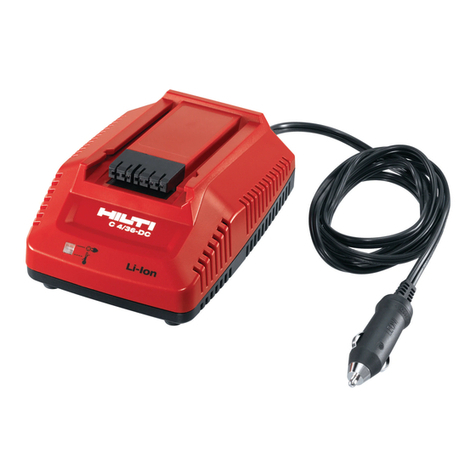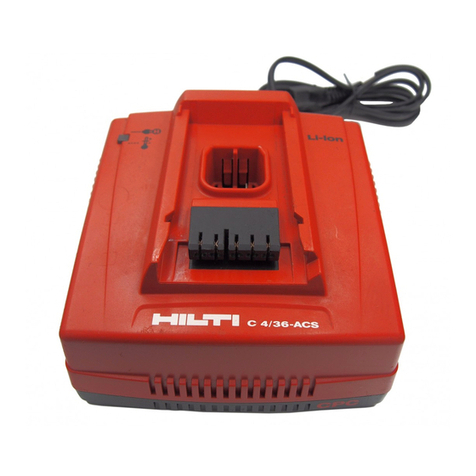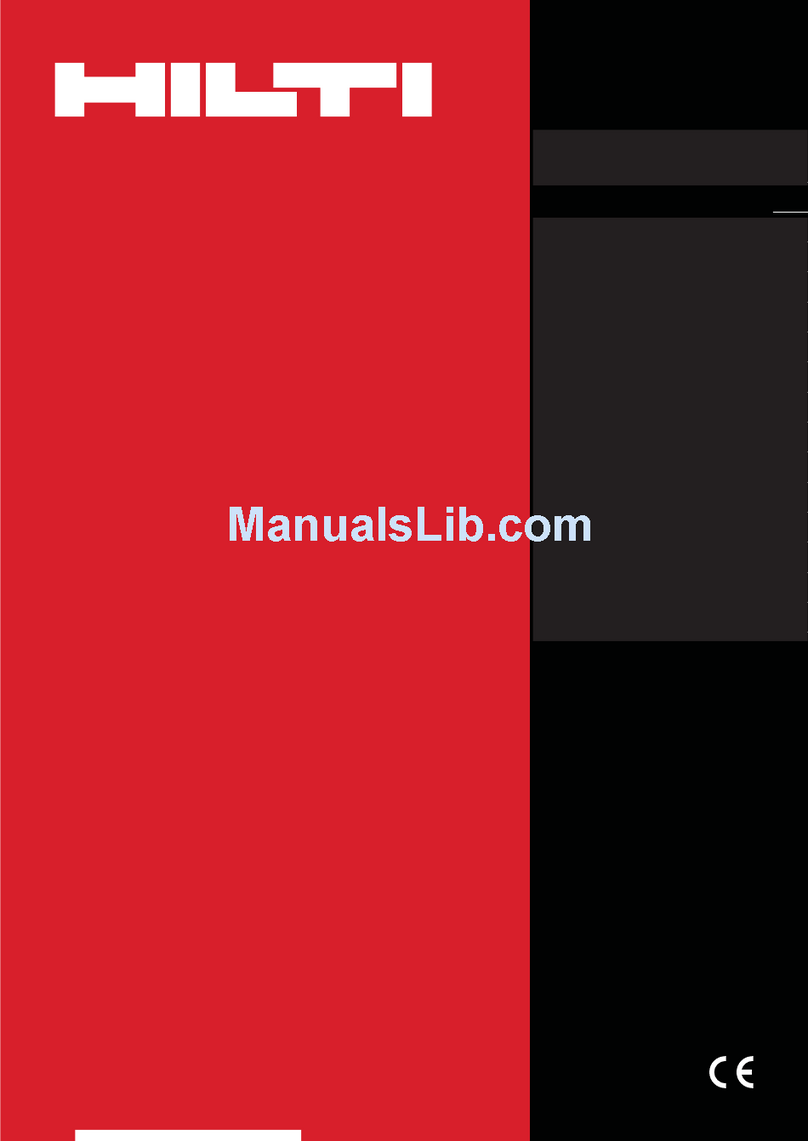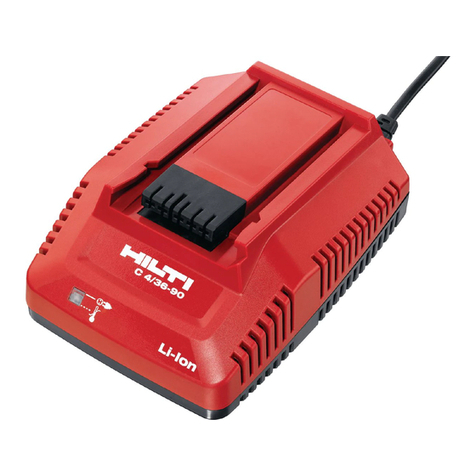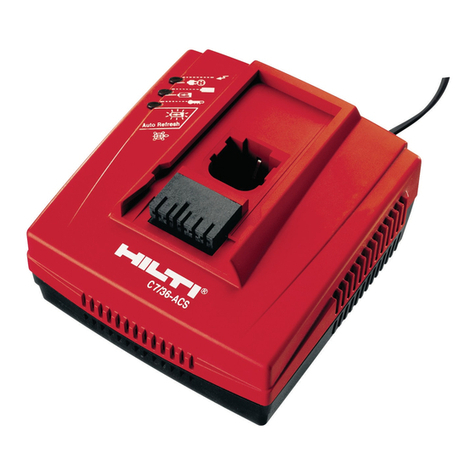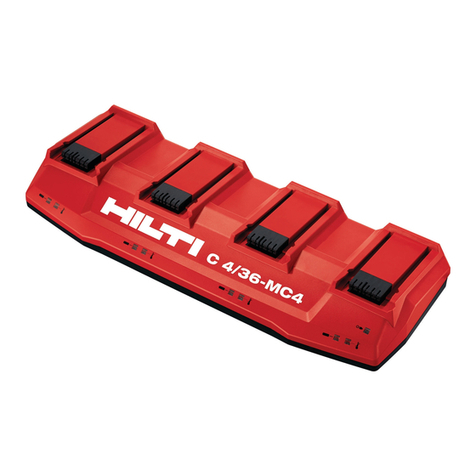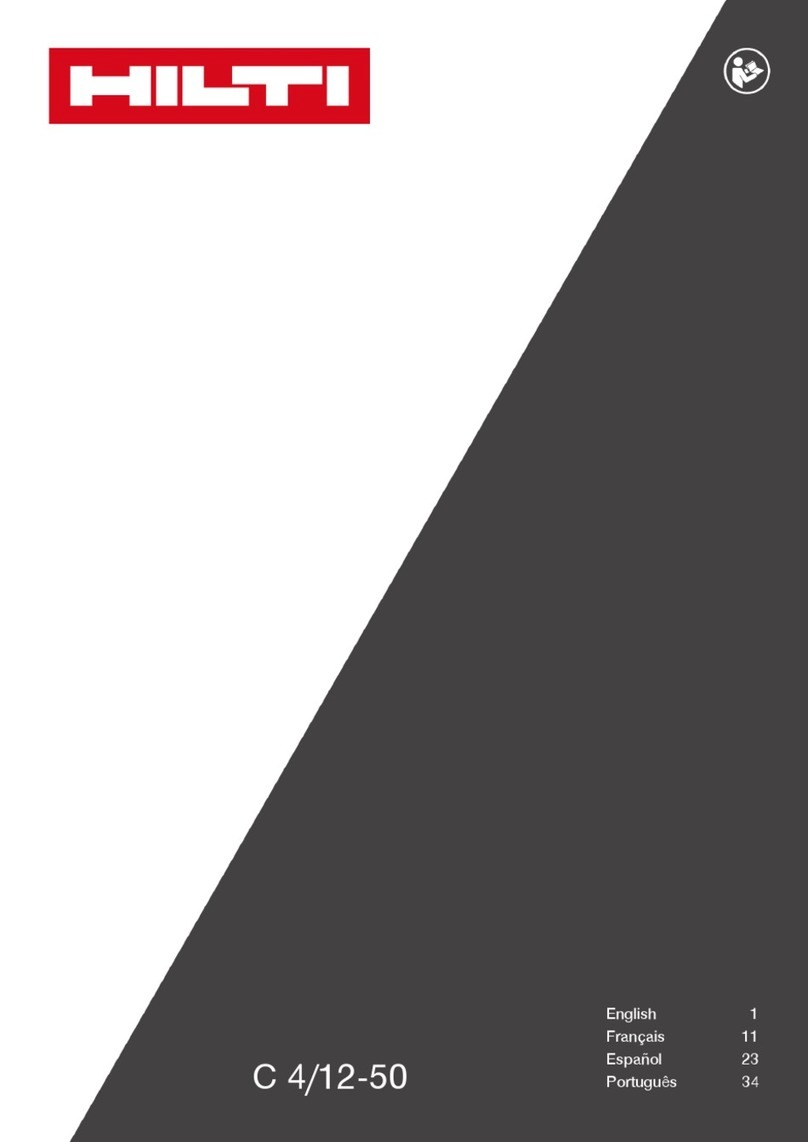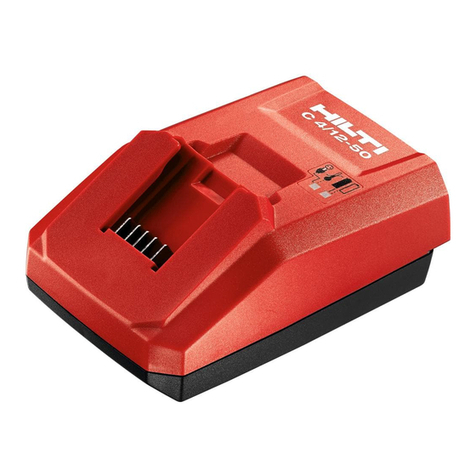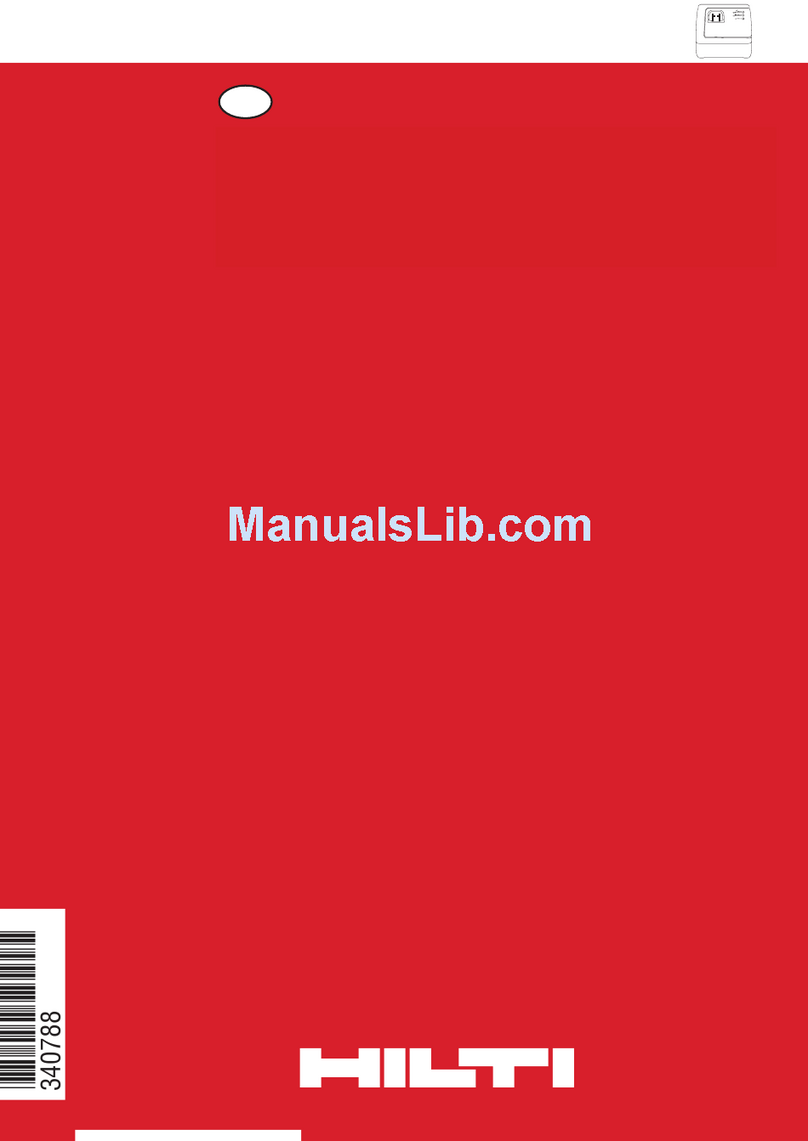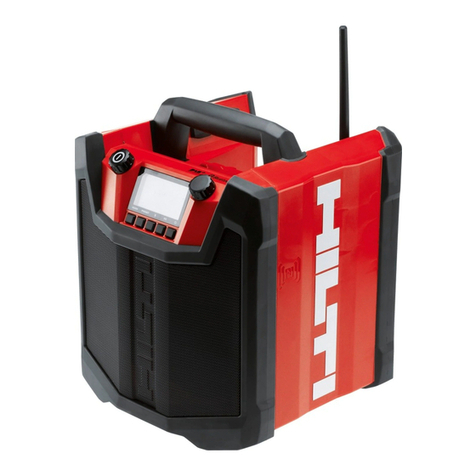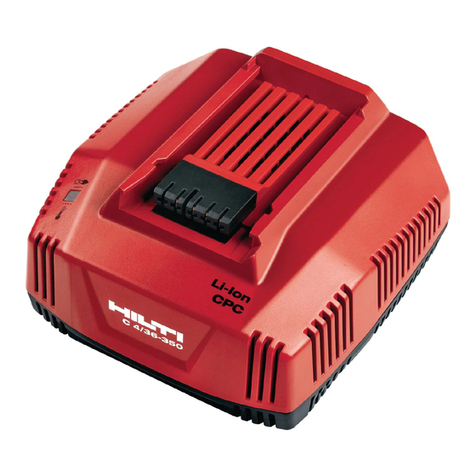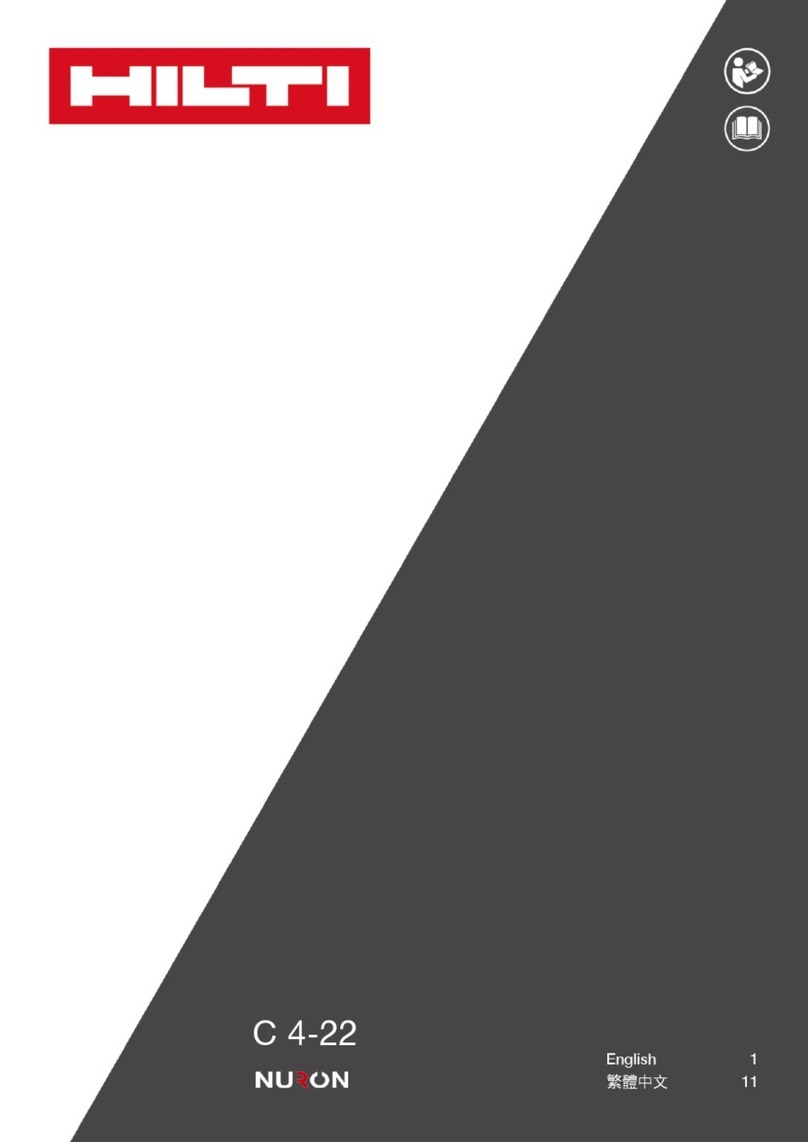4. Safety rules
4.1 General safety rules
WARNING! Read all instructions! Failure to follow all
instructions listed below may result in electric shock,
fire and/or serious injury. SAVE THESE INSTRUC-
TIONS !
4.1.1 Work area safety
a) Keep work area clean and well lit. Cluttered and
dark areas invite accidents.
b) Do not operate the applianceinexplosiveatmo-
spheres, such as in the presence of flammable
liquids, gases or dust. Chargers can cause sparks
which may ignite dust or fumes.
c) Keep children and other persons away from the
area while the charger is in use.
4.1.2 Electrical safety
a) The appliance’s plug must match the power out-
let. Modification of the plug in any way is not
permissible. Unmodified plugs and correspond-
ing power outlets reduce the risk of electric shock.
b) Avoid body contact with earthed or grounded
surfaces such as pipes, radiators, ranges and
refrigerators. There is an increased risk of electric
shock if your body is earthed or grounded.
c) Do not expose the appliance to rain or wet
conditions. Water entering an electric appliance
increases the risk of electric shock.
d) Do not abuse the supply cord. Never use the sup-
ply cord to carry, pull or unplug the appliance.
Keep the cord away from heat, oil, sharp edges
or moving parts. Damaged or entangled cords
increase the risk of electric shock.
e) Use the charger only indoors and protect it from
rain.
4.1.3 Personal safety
Do not wear jewelry such as rings or chains. Jewelry
could cause a short circuit and personal injury in the
form of burns.
4.1.4 Battery charger use and care
a) Use the charger only to charge the Hilti batteries
approved for use with this charger.
b) Do not use a charger if its casing or electric
supply cord is defective.
c) Store chargers out of reach of children when
not in use. Do not allow persons to operate
the appliance if they are unfamiliar with it or
these instructions.. Chargers are dangerous in
the hands of untrained users.
d) Maintain the appliance carefully. Check to en-
sure that no parts are broken or damaged in such
a way that the appliance can no longer func-
tion correctly. If damaged, have the appliance
repaired before use.
e) Use chargers and the corresponding batteries
in accordance with these instructions and as is
specified for this particular model. Use of char-
gers for applications different from those intended
could result in hazardous situations.
f) Recharge only with the charger specified by the
manufacturer. A charger that is suitable for one
type of battery pack may create a risk of fire when
used with another battery pack.
g) When not in use, keep the battery and the charger
away frompaper clips, coins, keys, nails, screws
or other small metal objects that could cause
a short circuit at the battery terminals or the
charging contacts. A short circuit at the battery
terminals or charging contacts could result in
personal injury (burns)orfire.
h) Under abusive conditions, liquid may be ejected
from the battery, Avoid contact with it. If contact
accidentally occurs, flush with water. Consult a
doctor if the liquid comes into contact with the
eyes. Liquids ejected from the battery may cause
irritation or burns.
4.1.5 Service
Have your appliance repaired only by qualified
specialists using only genuine Hilti spare parts.
This will ensure that the appliance remains safe to
use.
4.2 Additional safety precautions
4.2.1 Personal safety
a) Take care to ensure that the charger is standing
in a steady, secure position. A falling battery or
charger may present a risk of injury to yourself or
others.
en
14
